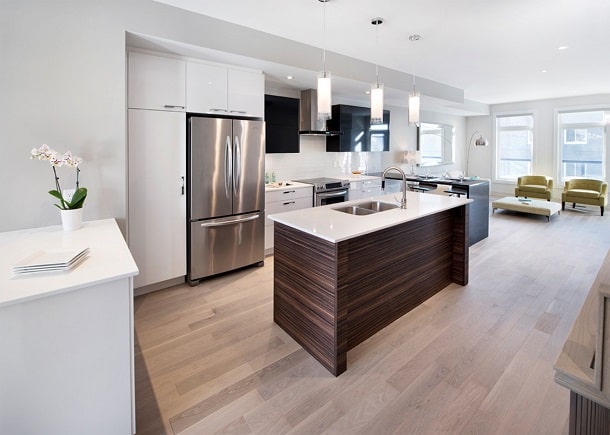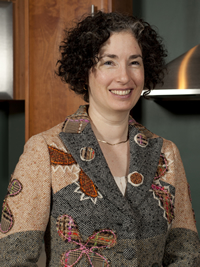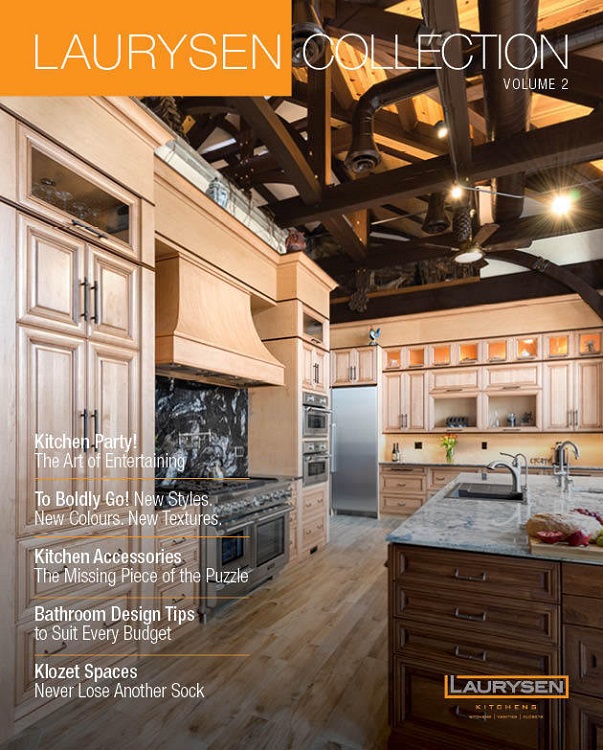
There’s no right way to design a kitchen, but sadly there are plenty of wrong ways—especially when you’re dealing with a small kitchen.
If you’ve got a space challenge on your hands, it’s critical to work with a kitchen designer. A good designer is a problem solver, and will get you a solution you’ll love for years to come.
Often, when we think of small kitchens, it conjures up our darkest thoughts—a cramped cooking area, overflowing cupboards, and untidy counters. Maybe even bruised elbows from poorly-placed edges.
However, it’s easy to forget that not all small kitchens are like this. In fact, a small kitchen in the hands of a skillful designer can become a thing of elegance and beauty, something useful and livable.
So this week, we asked the Laurysen design team about small kitchens. We wanted to know their challenges, triumphs and tricks with regard to a controversial topic. They kindly agreed to share some of their secrets.
1. Use The Space Efficiently: Bakr
Wael Bakr has always been a practicality-first designer. Originally trained as an architect, Bakr designs for maximum usefulness in the real world. While his designs look great, that’s not the main goal.
A great kitchen, for Bakr, is more in how it’s used than how it looks.
He approaches every kitchen design this way, but he feels it even more important in the case of smaller kitchens. “This is an area of design,” he says, “where many things can go wrong.”
Bakr advises looking for solutions that combine kitchen elements, or use the space more efficiently. For example, he’ll sometimes advise clients to buy a stove hood with a built-in microwave. He also helps clients pick smaller appliances that don’t skimp on efficiency or effectiveness.
His philosophy is that small kitchens, while they won’t be able to do all the things that a larger kitchen will, should still function well as large kitchens.
2. Plan Extensively: Hnatyshyn

When it comes to smaller kitchens, there are going to be sacrifices. You won’t be able to use that full-sized restaurant sink, and you may have to let some ideas go, but you shouldn’t have to give up everything!
Stephen Hnatyshyn believes strongly in the power of communication. His first step is always to ask the homeowners what they want and need.
It’s especially important to have these conversations, he feels, with regard to small kitchens. That’s because a smaller space always limits the amount of features that can fit.
His advice is to figure out what about your new kitchen is most important to you and then to work on making that a reality (within reason, of course).
3. Keep It Down to Earth: Manery
 There’s no way around it—some things are simply not possible in a smaller kitchen. It’s really important to keep your feet on the ground when looking at new kitchens. Kenysha Manery is a proponent of knowing what you’re getting into. Approach the new kitchen design, she says, with full knowledge of what is possible.
There’s no way around it—some things are simply not possible in a smaller kitchen. It’s really important to keep your feet on the ground when looking at new kitchens. Kenysha Manery is a proponent of knowing what you’re getting into. Approach the new kitchen design, she says, with full knowledge of what is possible.
In a smaller kitchen, she explains, it’s often impossible to fit many of the elements that larger, more stately kitchens are known for. Islands, in general, are impossible to fit in a smaller kitchen.
“If you have a space smaller than 12’x12’, there’s no possible way to get an island in there,” Manery explains. That’s because people need about 3 feet of walking space, and cupboards need to be at least 2 feet deep. “Mathematically,” she explains, “it just doesn’t work.”
So know what you’re getting into before you get your hopes up. Small kitchens are limited.
4. Prioritize the Essentials: Ben-Choreen
 So, if you can’t everything, what should you focus on?Aviva Ben-Choreen’s point of view is that the essentials, the things that the kitchen itself can’t do without, those come first.
So, if you can’t everything, what should you focus on?Aviva Ben-Choreen’s point of view is that the essentials, the things that the kitchen itself can’t do without, those come first.
Like Bakr, she wants the kitchen to be usable, but she wants the kitchen to be, first and foremost, an effective food preparation location. The “extras,” as she says, come secondary to that one goal.
But this is often a pretty difficult thing to get right. Ben-Choreen notes that she often encounters homeowners that want to put as much as possible into their small kitchen. In most cases, though, less is more—just so long as the essentials are there.
5. Dream Big and Translate Small: Tardioli
 Still, that doesn’t mean you can’t have what you want. You just might need to think a little smaller. As Heather Tardioli points out, there are often ways of making larger ideas work in a smaller kitchen. All it takes is a little know-how.
Still, that doesn’t mean you can’t have what you want. You just might need to think a little smaller. As Heather Tardioli points out, there are often ways of making larger ideas work in a smaller kitchen. All it takes is a little know-how.
“There are different ways to maximize the space and make it work for you,” she notes. “And it can be done without feeling too much disappointment.”
For Tardioli it’s about making your dreams come true, even within a smaller space.
6. Storage Is Key: Silcox
 One of the biggest design challenges with small kitchens is to do with storage: there’s simply not enough. No way around it—if you’re creating a smaller kitchen, you need to think about storage.
One of the biggest design challenges with small kitchens is to do with storage: there’s simply not enough. No way around it—if you’re creating a smaller kitchen, you need to think about storage.
For Kimberly Silcox, this means learning to think vertically, rather than just horizontally. Cabinets that stack work well, she says, but the best way to ensure you have the right amount of storage is to discuss what you’ll actually be putting in each cabinet.
Silcox usually sits down with her clients long in advance of the plan being drawn out. During that meeting, she asks them in no uncertain terms what will likely be put in each cabinet. The way she designs a cabinet for pots and pans versus a cabinet that is meant to hold wines will be very different.
So, think about what you’ll be storing in your small kitchen, and build the storage around that.
Bonus: The Look
Finally, there’s the question of aesthetics. It’s not much of a tip, but all our designers made at least some mention of the look of the kitchen. The thing is, the look is always going to be important, whether the kitchen is small or big.
And while there are some aesthetic issues with smaller kitchens (a small kitchen may need to be better lit due to confined spaces), that look will come as a consequence of good, practical design.
So, when you’re looking at beautiful kitchen photos on the net, keep in mind how big each one is. Often some of the most gorgeous are actually very large rooms, which means the designer has more options and can afford to go for some flash.
Beautiful looks may be part of the experience you want, but what you need is a kitchen you can use.

